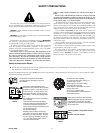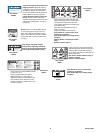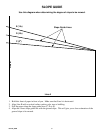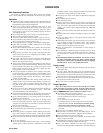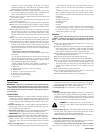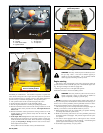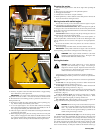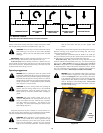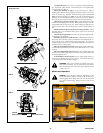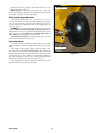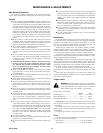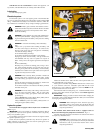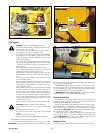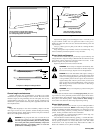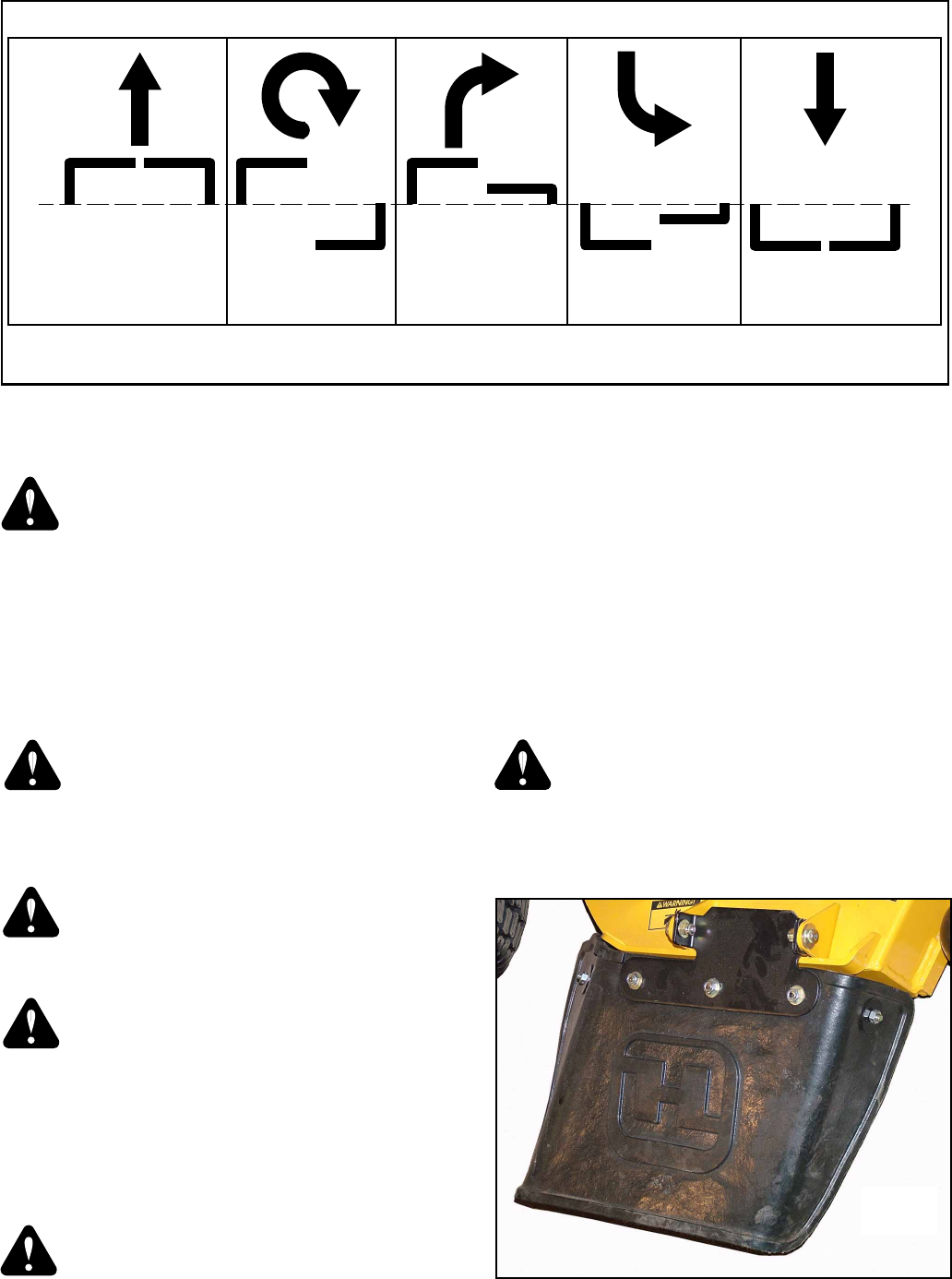
601156_0308 15
forward. Push the left steering control lever farther forward from neutral
than the right steering control lever and finish the turn. (Fig. 3-9)
WARNING: Always be aware of what is behind the machine
before backing up. Do not mow in reverse unless absolutely
necessary. Always look down and behind before and while
backing up.
IMPORTANT: Rapid movement of steering control levers is not recom-
mended as damage to the hydraulic system components may occur.
To increase speed, increase steering control lever’s distance from neu-
tral. The farther forward steering control levers are from neutral, the faster
tractor will travel forward. The farther back steering control levers are from
neutral, the faster tractor will go in reverse.
Operating suggestions
DANGER: Prior to operating the tractor the operator should
be thoroughly familiar with the proper use and operation of the
equipment, should read the manual completely and thoroughly,
and should have attempted slow moving maneuvers to become
familiar with the operation of the equipment before attempting
normal speed operation. An inexperienced operator should not
mow on slopes or on uneven terrain.
WARNING: If you lose steering control while operating the
machine, place the steering control levers in the park brake
position immediately. Inspect the machine and involve your
Hustler dealer to resolve the problem before continuing to
operate.
WARNING: The unit’s steering control levers are very
responsive: Easy does it! For smooth operation, move lever
slowly, avoid sudden movement. Skill and ease of operation
come with practice and experience. The machine can spin
very rapidly. Use caution when making turns and slow down
before making sharp turns.
Inexperienced operators may have a tendency to oversteer and lose con-
trol. Slow-moving practice maneuvers are recommended to become familiar
with these characteristics before attempting normal speed operation.
WARNING: Sharp depressions or raised obstacles (such as
gutters or curbs) should not be directly approached at high
speed in an attempt to “jump” them as the operator could be
thrown from the equipment. Approach at a slow speed and
angle one drive wheel at the obstruction. Continue at an angle
until the wheel clears and then pivot the opposite wheel
around.
When turning on soft wet turf, keep both wheels rolling either forward or
backward. Pivoting on one stopped wheel can damage turf. This is espe-
cially important when mowing.
Tractor performance is maximum when the throttle is set at full rpm.
This gives maximum power to the drive wheels and deck when needed. Use
the control levers to control ground speed rather than engine rpm.
Keep blades sharp. Many professional mowing companies have addi-
tional sets of blades and change blades twice a day: once in the morning and
again at noon. Many problems with incorrect cutting patterns are due to
dull blades or blades which have been sharpened incorrectly. Information
on sharpening blades is listed in this manual’s maintenance section. In addi-
tion, most communities have individuals or companies which specialize in
sharpening mower blades. Blade sharpness should be checked daily.
DANGER: Never work with blades while engine is running or
deck clutch switch is engaged (on). Always place deck clutch
switch in the disengaged position, place steering control levers
in the park brake position and turn engine off and disconnect
negative battery cable. Block up mower when you must work
under it. Wear gloves when handling blades. Always check
for blade damage if mower strikes rock, branch or other for-
eign object during mowing!
FRONT OF TRACTOR FACES THIS DIRECTION
N N
FORWARD TRAVEL ZERO DEGREE
TURN
FORWARD TRAVEL
RIGHT TURN
REVERSE TRAVEL
RIGHT TURN
REVERSE TRAVEL
N = NEUTRAL POSITION
Direction of arrows indicate direction of tractor movement
Figure 3-7
Figure 3-8
Side
discharge
chute



